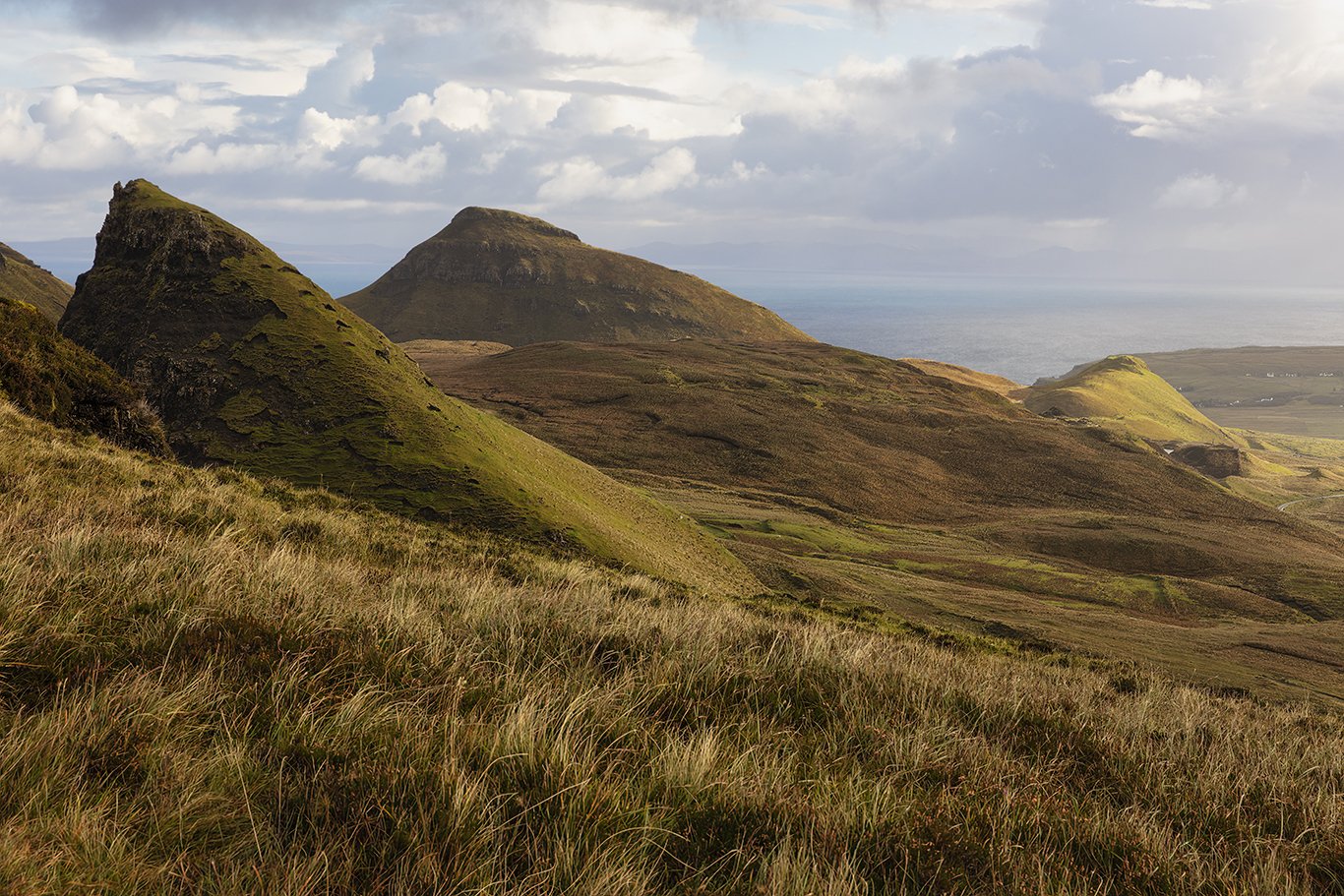We’ve taken the ferry to the Isle of Lewis and Harris, and have gone to Seilebost Beach for our first set of photos of the day. It’s now on to the Callanish Stones for a late afternoon shoot. This is no small distance to get there, it’s very cloudy, and the remaining daylight will not last long.
Having arrived at this great marvel, all the photographers on our trip vie for position to gain a vantage point in which there is some spacing between the stones. The problem is, all our tripods are on top of each other, it has started drizzling, and the light is fading fast. After every shot, I have to wipe the camera lens with a special cloth and must shield the lens from raindrops with my umbrella.
This has become especially difficult, in that I’m experimenting with long exposures to streak the moving clouds.
The light is now gone, and I’m looking forward to getting warm and dry. We go back to our hotel, and I’m told that tomorrow afternoon we’ll return to this site to experience different lighting conditions.
We’re back at the Callanish Stones again the next day, and now I’m getting a new feel for the way this place looks. This stone circle is situated on a low ridge, overlooking Loch Roag. The hills in the distance are referred to as the Great Bernera. Thirteen stones form a circle, with a monolith appearing in the middle. All of the stones are composed of Lewisian gneiss, with the central structure standing 4.8 meters high.
The Callanish Stones were assembled between 2900 and 2600 BC. Archaeologists have found evidence that this area was part of a prehistoric field system dating from the late Bronze age to the early Iron Age. The Stones were estimated to have been abandoned around 800 BC and covered by a thick layer of turf. It was re-discovered in 1857 when the overlying layer of peat was removed.
It’s starting to get later in the day, and the light is changing rapidly. The sky is taking on a violet hue, really something to see. The appearance of this site is significantly different from that of the day before. Ron, one of the professionals, comes by to check my compositions. With his advice, I take some of the foregrounds out and leave more for the beautiful appearing sky.
He also suggests that I start shooting in manual mode, rather than aperture priority, for optimal control of my camera.
It is dark now, and we all pile back into the bus for the long ride back to the hotel. As I review my photos, I feel good about the great natural beauty that we’ve encountered in the Scottish Highlands. I’ve also gained some good photographic knowledge from Don, Ron, and Alex, the professionals. It’s time for a beer, dinner, and some needed sleep.







